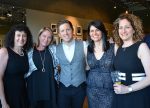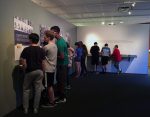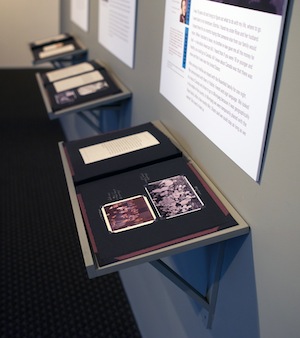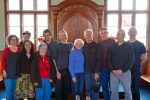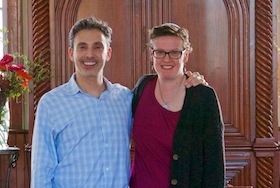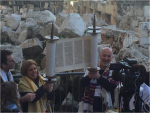Dr. Marc Gopin of George Mason University and Rabbi Dr. Laura Duhan Kaplan of Vancouver School of Theology at the VST event Encountering the Other: An Inter-Religious Conference. (photo from Laura Duhan Kaplan)
Encountering the Other: An Inter-Religious Conference took place at the Vancouver School of Theology (VST) May 15-17. The initiative of Rabbi Dr. Laura Duhan Kaplan, director of Inter-Religious Studies and professor of Jewish studies at VST, the conference examined how religious traditions can deal with difference and meet one another in a pluralistic society.
Thirty scholars and artists gathered for the two full days of learning about approaches to the “other” in Christianity, Judaism, Islam, indigenous traditions, Buddhism, Sikhism and Hinduism.
The conference opened with the keynote address The Journey Toward Less Violence and More Empathy: A Scientific and Spiritual Convergence by Dr. Marc Gopin, director of the Centre for World Religions, Diplomacy and Conflict Resolution at George Mason University. Gopin has long been a leader in analyzing obstacles and opportunities for religions to be peacebrokers.
Over the course of the conference, there were talks on such issues as the ongoing encounter between indigenous peoples and Christianity; the Sufi poet Rumi and his views of other religions; universalistic resources from the Hindu tradition; the interaction of Buddhism, Confucianism and Shinto in Japan; relations between the three Abrahamic religions; and the portrayal of Christianity in the Quran.
Kaplan offered a presentation on what she views as the “deep ecumenism” of Chassidic teacher Rabbi Nachman of Breslov (1772-1810). According to Rebbe Nachman, “no place in the circle of the universe is empty of God, all wisdoms express divinity,” she explains in her talk. “All are unique frequencies of Divine music that emanate from a single source. The source flows like a river between banks of polarized opinion. The biblical villain Pharaoh represents the stubborn seeker whose extreme opinions separate people. Only someone like the biblical hero Moses, who can be silent in the face of conflict, can stand up to Pharaoh.” Among other questions, she asked attendees to consider how this spiritual reality behind ordinary life could be helpful in inter-religious conflict resolution.
Another talk of particular interest to Jews was Searching for the Sacred Other in the Palestinian-Israeli Conflict by Lynn Mills. Mills, a Christian speaker, spoke of the numerous peace activists and conflict resolution organizations that are refusing to give up on finding peaceful resolutions to the conflict. She argued for the strength of approaches based on the thoughts of Jewish philosopher and early Zionist Martin Buber (1878-1965); specifically, Buber’s concept of “I and Thou,” which stresses direct, reverent meetings between people, free of intellectual and emotional baggage. According to Mills, this idea is “threaded throughout non-violent peacemaking initiatives in the region” and, she writes in her abstract, that “it is only when we cease to view the other as an enemy and instead see them as a sacred other that a true and lasting peace can be achieved.”
Kaplan said Mills’ talk was notable for the lack of controversy it engendered among listeners, as well as the sense of hope and optimism it offered.
On the Monday evening, the conference featured a presentation by Fossil Free Faith – a panel discussion on religious activism and climate change led by a Quaker, an Eastern Orthodox Christian and a Jew. And, on the Tuesday, three different bands took the stage for a world music concert – the Jewish group Sulam, the Indo-Japanese group Naad and Franco-Arabic musician Emad Armoush.
Matthew Gindin is a Vancouver freelance writer and journalist. He blogs on spirituality and social justice at seeking her voice (hashkata.com) and has been published in the Forward, Tikkun, Elephant Journal and elsewhere.


